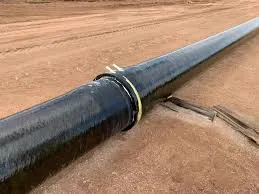
-
 Afrikaans
Afrikaans -
 Albanian
Albanian -
 Amharic
Amharic -
 Arabic
Arabic -
 Armenian
Armenian -
 Azerbaijani
Azerbaijani -
 Basque
Basque -
 Belarusian
Belarusian -
 Bengali
Bengali -
 Bosnian
Bosnian -
 Bulgarian
Bulgarian -
 Catalan
Catalan -
 Cebuano
Cebuano -
 China
China -
 China (Taiwan)
China (Taiwan) -
 Corsican
Corsican -
 Croatian
Croatian -
 Czech
Czech -
 Danish
Danish -
 Dutch
Dutch -
 English
English -
 Esperanto
Esperanto -
 Estonian
Estonian -
 Finnish
Finnish -
 French
French -
 Frisian
Frisian -
 Galician
Galician -
 Georgian
Georgian -
 German
German -
 Greek
Greek -
 Gujarati
Gujarati -
 Haitian Creole
Haitian Creole -
 hausa
hausa -
 hawaiian
hawaiian -
 Hebrew
Hebrew -
 Hindi
Hindi -
 Miao
Miao -
 Hungarian
Hungarian -
 Icelandic
Icelandic -
 igbo
igbo -
 Indonesian
Indonesian -
 irish
irish -
 Italian
Italian -
 Japanese
Japanese -
 Javanese
Javanese -
 Kannada
Kannada -
 kazakh
kazakh -
 Khmer
Khmer -
 Rwandese
Rwandese -
 Korean
Korean -
 Kurdish
Kurdish -
 Kyrgyz
Kyrgyz -
 Lao
Lao -
 Latin
Latin -
 Latvian
Latvian -
 Lithuanian
Lithuanian -
 Luxembourgish
Luxembourgish -
 Macedonian
Macedonian -
 Malgashi
Malgashi -
 Malay
Malay -
 Malayalam
Malayalam -
 Maltese
Maltese -
 Maori
Maori -
 Marathi
Marathi -
 Mongolian
Mongolian -
 Myanmar
Myanmar -
 Nepali
Nepali -
 Norwegian
Norwegian -
 Norwegian
Norwegian -
 Occitan
Occitan -
 Pashto
Pashto -
 Persian
Persian -
 Polish
Polish -
 Portuguese
Portuguese -
 Punjabi
Punjabi -
 Romanian
Romanian -
 Russian
Russian -
 Samoan
Samoan -
 Scottish Gaelic
Scottish Gaelic -
 Serbian
Serbian -
 Sesotho
Sesotho -
 Shona
Shona -
 Sindhi
Sindhi -
 Sinhala
Sinhala -
 Slovak
Slovak -
 Slovenian
Slovenian -
 Somali
Somali -
 Spanish
Spanish -
 Sundanese
Sundanese -
 Swahili
Swahili -
 Swedish
Swedish -
 Tagalog
Tagalog -
 Tajik
Tajik -
 Tamil
Tamil -
 Tatar
Tatar -
 Telugu
Telugu -
 Thai
Thai -
 Turkish
Turkish -
 Turkmen
Turkmen -
 Ukrainian
Ukrainian -
 Urdu
Urdu -
 Uighur
Uighur -
 Uzbek
Uzbek -
 Vietnamese
Vietnamese -
 Welsh
Welsh -
 Bantu
Bantu -
 Yiddish
Yiddish -
 Yoruba
Yoruba -
 Zulu
Zulu
Exploring Techniques and Challenges of Drilling Through Limestone for Construction and Geotechnical Projects
Drilling Through Limestone Techniques and Considerations
Limestone is a sedimentary rock primarily composed of calcium carbonate and is widely used in various industries, including construction, agriculture, and manufacturing. Its properties make it an essential material for creating cement, lime, and other building materials. However, drilling through limestone can pose unique challenges due to its hardness and potential for structural variance. This article explores the techniques and considerations involved in drilling through limestone.
Understanding Limestone Geology
Before embarking on a drilling project, it is essential to understand the geological characteristics of limestone. Limestone formations can vary significantly, influenced by factors such as the presence of fossils, the degree of crystallization, and the moisture content. Some limestone is relatively soft and easy to drill, while others may exhibit considerable hardness, requiring specialized equipment and techniques. Additionally, limestone often contains voids or cavities, which can affect drilling success and stability.
Preparing for Drilling
1. Site Assessment A thorough geological survey of the drilling site is crucial. This process may involve evaluating the depth of limestone, identifying any structural anomalies, and analyzing the overall stability of the ground. Geologists may use techniques such as drill core sampling to obtain a clear picture of the subsurface conditions.
2. Choosing the Right Equipment The selection of drilling tools is vital for effective penetration of limestone. Common tools include rotary drill bits, hammer drill bits, and diamond-tipped bits. Rotary bits equipped with tungsten carbide or diamond segments are particularly effective for hard limestone, providing durability and precision. For deeper drilling or heavier applications, hydraulic drills may be used, offering increased power and efficiency.
Drilling Techniques
drilling through limestone

1. Rotary Drilling This technique involves the use of a rotating drill bit that grinds away at the limestone. The continuous rotation generates significant heat, necessitating the use of drilling fluids to cool the bit and flush away debris. Utilizing the right drilling mud is essential, as it helps to stabilize the drill hole and prevent collapse.
2. Percussive Drilling In applications requiring rapid penetration, percussive drilling can be employed. This method combines rotational drilling with hammering action, efficiently breaking through hard rock layers. The impact of the hammering mechanism helps to dislodge fragments of limestone, facilitating a smoother drilling process.
3. Directional Drilling For projects where precise drilling is required, such as in geotechnical studies or utility installation, directional drilling allows operators to drill at various angles without the need for extensive excavation. This technique proves especially beneficial in urban areas where surface disruption must be kept to a minimum.
Considerations and Challenges
Drilling through limestone is not without its challenges. Variations in rock hardness can lead to wear on drilling equipment, increasing costs and project timelines. Moreover, the presence of water within the limestone can create additional complications, requiring the use of specialized equipment to manage fluid influx and maintain drilling stability.
Environmental considerations are also paramount. Drilling operations can have a significant impact on local ecosystems, particularly if water resources are compromised. Adopting sustainable drilling practices, such as minimizing noise and pollution, is essential to minimize the ecological footprint of the project.
Conclusion
Drilling through limestone is a complex process requiring careful planning and execution. By understanding the geological characteristics of limestone, selecting appropriate drilling techniques, and considering environmental factors, operators can effectively achieve their drilling objectives. As industries continue to rely on this versatile rock, mastering the art of drilling through limestone will remain vital for ensuring both efficiency and sustainability in resource extraction and construction practices.
Latest news
-
Oblate Tanks: Space-Saving, Durable Liquid Storage SolutionsNewsAug.27,2025
-
High-Performance Piping System Solutions for Industry & Commercial UseNewsAug.26,2025
-
Precision Fittings: Durable & Reliable Industrial & Plumbing SolutionsNewsAug.25,2025
-
Practical Steps: Unlock Success with Our Proven GuidesNewsAug.24,2025
-
Transport Tanks: Safe, Durable & Efficient Liquid HaulingNewsAug.23,2025
-
High-Quality Piping Systems for Efficient Flow & DurabilityNewsAug.22,2025









